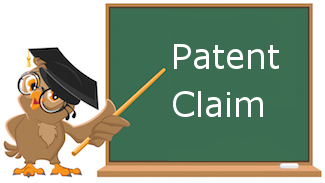What is a Patent?
A patent is a set of exclusive right granted to an individual by a sovereign state for a defined duration period in lieu of putting the invention open in public domain.
Typically a patent is granted for a product or process, which is new, inventive and has industrial application.
Any patent, or patent application, contains a variety of sections which include different information. Generally, a patent can be broadly divided into 3 sections:
- A specification
- Drawings
- Patent claim(s)
What is a patent claim?
A patent claim is the legally enforceable part of patent application. It defines the boundary of patent protection that is granted to a particular invention. A patent claim defines exactly the limits of what is claimed in the invention and what is not covered under the Patent Application.
Rest of the patent application only helps in further understanding of claimed invention in detail. A claim is usually expressed as a statement of technical facts expressed in terms of legal aspects, defining the scope of the invention to be protected.
Importance of Patent Claim
Claims define the invention for which Patent office has granted protection. Once the patent is granted, no third party has rights to use that invention. Claim specifies the legal rights granted to the Applicant when the patent is granted.
Claims being the most important aspect of a patent application and any error in drafting patent claim would result in worthless patent. A patent application must end with a patent claim(s) that defines the scope of the invention for which patent protection is claimed.
What are the different types of patent claims?
Broadly, claims can be broadly categorized into 2 types of claims depending upon the dependency of one claim on another:
- Independent claims
- Dependent claims
Independent claims: An independent claim is ‘stand alone’ claim that does not depend on any other claim. It contains a preamble and all the necessary elements to define the invention. When filing a new patent application, claim 1 should always be independent.
Dependent Claims: Dependent claims are the claims that depend on Independent Claims and are proper ‘subsets’ of their parents, i.e. the Independent claim(s) upon which they depend. Dependent claims ensure broad interpretation of the claims on which they depend. Moreover, it may contain known features and even the fine details and optional features of invention.
How to draft a patent claim?
Parts of a Patent Claim:
A typical patent claim can be divided into 3 parts:
- Preamble: The Preamble of the Patent Claim corresponds to the introductory phrase of the Patent Claim that helps to identify the category of the invention.
- Transitional Phrase: The transitional phrase connects the Preamble of the Claim with the body of the Claim and can be open ended or closed phrases.
- Body: The body of the claim defines the embodiments (i.e. the elements) and the limitations of the claim. The body of the claim further explains the embodiments and their interconnection with each other.
Drafting a patent claim:
Drafting a patent claim is a skillful task as it involves expertise that can capture the novelty, non-obviousness and industrial applicability of invention in techno-legal language.
There is no straight forward method for drafting a patent claim. Drafting patent claim depends upon invention and the kind of protection ‘Applicant’ seeks to claim on that invention. The claim may be constructed in a broad or narrow manner in reference to existing prior art, depending on the protection sought by the applicant. Noticing the complex nature of drafting patent claim, it is obvious that drafting expertise is required to draft proper patent specifications and claims. For good quality patent drafting, it is always better to hire professionals.
Do you have any further queries regarding patent claims? Click here to know more about patent services or send us an e-mail at: Contact@Kafiling.com.



